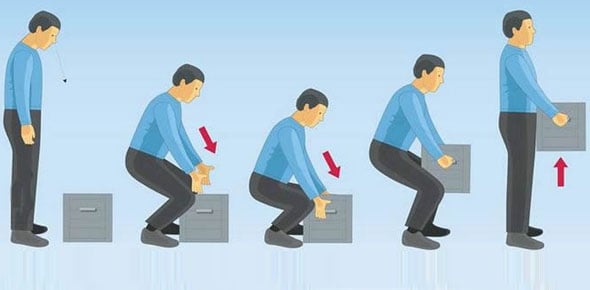Arc-welding is a safe occupation when sufficient measures are taken to protect the welder from potential hazards. When these measures are overlooked , however, welders can encounter such dangers as electric shock, over exposure to fumes and gases, arc radiation, and fire and explosion; which may result in serious, or even fatal injuries.

Even though the output voltage of a manual electric
arc welding transformer (welding transformer) at open
circuit no-load condition is not very high, only about
60 to 80 Volt a.c. It could cause electric shock .
2. The Electric shock may cause injuries to the welding
workers and sometimes leads to death.
The followings are the common causes of electric shock
1.Overlook the potential hazards in the working environment
2.Carelessness during welding
3.Use of unsafe welding equipment.
Enhanced Welding Safety to Prevent Electric Shock
In order to prevent electric shock and to minimize the damage or injury , We should follow
the following:
1. To avoid direct contact with the live parts of welding equipment
and the workpiece to prevent electric shock.
2. To make the overall impedance of the leakage current path is large
1. Do Not weld in open source during raining.
2. Do not stay in water or seriously flooded workplace to weld.
Safe Working Practices
Avoid making direct contact with any exposed conductor of the electrode
holder, the connected welding electrode and the exposed metal part of the
workpiece with the bare hands or the body.
Always keep the hands and the body dry.
Do not put the welding transformer too far away from the workplace.In case
of need or accident,the welding transformer can be switched off in time to
disconnect the power source.
Switch off the welding transformer when it stops welding to take breaks for
rest,tea and meal.Also properly dispose of the welding rod remained on the
electrode holder.
 Use of Safety Welding Equipment
Use of Safety Welding Equipment
o Properly earth the metal casing of welding transformer by
connecting separate earth wire to the power source.
o Install an automatic voltage regulator in the welding
transformer to reduce the open circuit no-load voltage of
the transformer and the risk of electric shock.
o Use proper cable connectors to extend the welding cables.
o Use proper and safe welding equipment
USE PPE
1. Wear dry welding gloves.
2.Wear good insulating shoes
and boots.
3.Wear protective clothing.
Avoid naked body.
Even though the output voltage of a manual electric
arc welding transformer (welding transformer) at open
circuit no-load condition is not very high, only about
60 to 80 Volt a.c. It could cause electric shock .
2. The Electric shock may cause injuries to the welding
workers and sometimes leads to death.
The followings are the common causes of electric shock
1.Overlook the potential hazards in the working environment
2.Carelessness during welding
3.Use of unsafe welding equipment.
Enhanced Welding Safety to Prevent Electric Shock
In order to prevent electric shock and to minimize the damage or injury , We should follow
the following:
1. To avoid direct contact with the live parts of welding equipment
and the workpiece to prevent electric shock.
2. To make the overall impedance of the leakage current path is large
1. Do Not weld in open source during raining.
2. Do not stay in water or seriously flooded workplace to weld.
Safe Working Practices
Avoid making direct contact with any exposed conductor of the electrode
holder, the connected welding electrode and the exposed metal part of the
workpiece with the bare hands or the body.
Always keep the hands and the body dry.
Do not put the welding transformer too far away from the workplace.In case
of need or accident,the welding transformer can be switched off in time to
disconnect the power source.
Switch off the welding transformer when it stops welding to take breaks for
rest,tea and meal.Also properly dispose of the welding rod remained on the
electrode holder.
o Properly earth the metal casing of welding transformer by
connecting separate earth wire to the power source.
o Install an automatic voltage regulator in the welding
transformer to reduce the open circuit no-load voltage of
the transformer and the risk of electric shock.
o Use proper cable connectors to extend the welding cables.
o Use proper and safe welding equipment
USE PPE
1. Wear dry welding gloves.
2.Wear good insulating shoes
and boots.
3.Wear protective clothing.
Avoid naked body.









